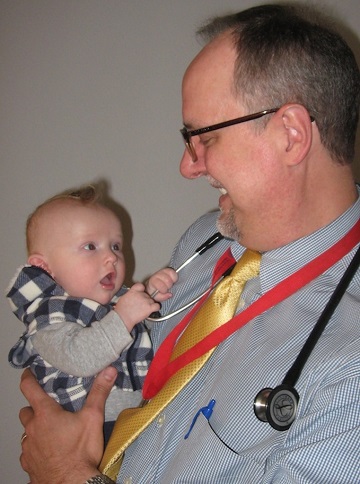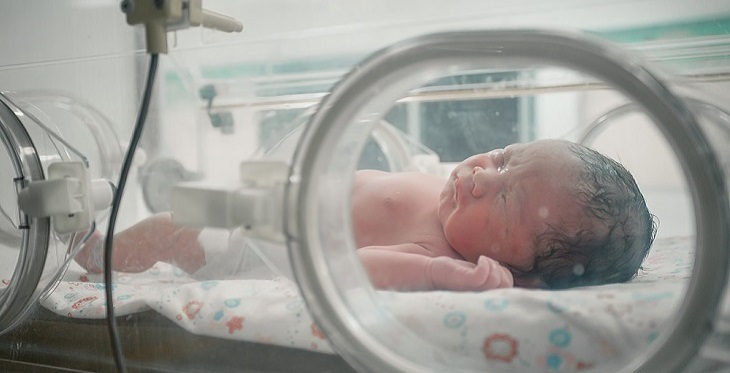In the March 14 edition of the journal Circulation, the American Heart Association published what is described as the first comprehensive scientific statement on the growing use of telemedicine in pediatric cardiology.
“In most cases, the potential advantages of telemedicine in pediatric cardiology are numerous, including improving access to care, improving quality and saving lives,” the heart association stated. “In addition, this appears to be occurring with enhanced patient and practitioner satisfaction and cost-efficient medicine.”
Faculty and colleagues with the Arizona Telemedicine Program, based at the University of Arizona College of Medicine in Tucson, also point to telemedicine’s progress over the last decade or so.
For anxious parents in rural Arizona, whose newborn shows signs of a congenital heart defect, the time it takes for a pediatric cardiologist at Banner-University Medical Center in Tucson to evaluate their infant’s echocardiogram has been dramatically reduced – from nerve-wracking hours or days, to an hour or less.
The change occurred a decade ago when store-and-forward transmission of an echocardiograph – or, in some cases, calling on Fed-Ex to drive an echo tape from a rural community to Tucson – was replaced by broadband networks providers, including the Arizona Telemedicine Program based at the University of Arizona College of Medicine in Tucson.
“The ability we have now to provide expert input using HIPAA-protected telehealth is vital in a state like Arizona,” said Scott Klewer, MD, professor of pediatrics and chief of pediatric cardiology at the UA College of Medicine in Tucson and its hospital affiliate, Banner-University Medical Center Tucson.
“Now, we can look at (a remote hospital’s) echocardiogram in real-time, and we can say ‘yes, this is significant, and you should arrange for transport,’ or ‘no, this is something you can handle, and we can help you.’”
Dr. Klewer and his colleagues, including Daniela Lax, MD, have been leaders in the use of telemedicine in pediatric cardiology; for example, they were the first to report – in the December 2012 issue of Telemedicine and e-Health – that neonatal echocardiograms viewed and interpreted via telemedicine are as accurate as echocardiograms recorded and shipped to the interpreting cardiologist in another city.
Their findings stemmed from their work with Yuma Regional Medical Center, in the southwest corner of Arizona, three and a half hours from Tucson.
In addition to consulting with Yuma physicians, the UA cardiologists have provided echocardiography training – in-person and remotely, via telehealth – to the Yuma hospital’s nursery technicians.
Dr. Klewer would like to spread that training across Arizona. Currently, only four Arizona hospitals have pediatric cardiologists on staff. In addition to Banner-University in Tucson, they include two Banner hospitals in the Phoenix area, and Flagstaff Medical Center in northern Arizona.
“To provide training throughout Arizona, I think, is now a tangible,” Dr. Klewer said. He also points out that pediatric cardiology groups nationwide are providing telecardiology services to hospitals in their region. “Where we stand out is that we took a very proactive role in training individuals in the technology,” he said.
Neonatologist Dale Alverson, MD, Professor Emeritus and Regents' Professor at the University of New Mexico, and one of the lead authors of the scientific statement, noted that the American Academy of Pediatrics and other medical groups are recommending oxygen saturation screenings on all newborns.
“When I talk to our pediatric cardiologists at our university, they see the screenings as incredibly important, but also an incredible challenge,” Dr. Alverson said. “That’s a major reason why telemedicine is important to pediatric cardiology.
“Telemedicine gives the neonatologist and pediatric cardiologist the ability to collaborate and make decisions about a baby’s diagnosis in real time,” said Tarisai Zivira, MSN, RNC-NIC, director of Yuma Regional Medical Center’s neonatal ICU and pediatrics and women’s services.
“As a result, decisions to either transfer to a tertiary facility or provide treatment here, depending on the baby’s heart diagnosis, are made quickly, preventing delay of care. Telemedicine also provides peace of mind, not only to the physicians, but to the families as well, by knowing that a pediatric cardiologist is collaborating with their baby’s health team at our hospital to provide the best possible care for their little one’s heart.”
As for the future, Dr. Klewer expects advances in outpatient heart monitoring, using telemedicine for home visits.
“Now we utilize our home care nurses to check on our most fragile babies at home, to weigh them and check their oxygen levels daily, and then give the doc a verbal report,” he said. “That’s an example of where I see the ability to use technology, to improve our level of service to our patients and their families.”
Read the American Heart Association’s Scientific Statement:

